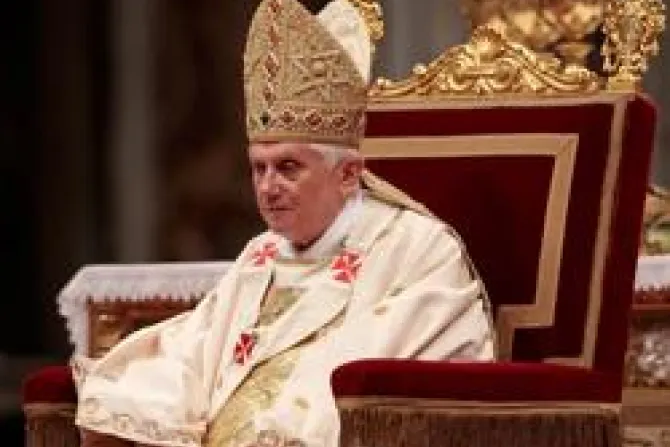Vatican City, Dec 12, 2011 / 15:26 pm
Pope Benedict XVI confirmed that he will visit Cuba and Mexico next year, during a Dec. 12 Mass honoring Our Lady of Guadalupe and celebrating Latin American and Carribean independence.
“With this strong desire, and supported by the aid of divine providence,” he said in his homily at St. Peter's Basilica, “I have the intention to undertake an apostolic journey before the holy Easter, to Mexico and Cuba, there to proclaim the word of Christ.”
Representatives of Latin American countries displayed their national flags at the Mass, which commemorated both the Virgin Mary's 1531 appearance in Mexico, and the end of Spanish rule in the Americas between 1810 and 1825.
The Pope said next year's planned trip was based on a conviction that “this is a precious time to evangelize” in Latin America and the Caribbean. In his homily, he called for the New Evangelization to reach the countries currently marking 200 years of independence.
“The true disciples and missionaries of the Lord will thus be multiplied, and the vocation of Latin America and the Carribean to hope will be renewed,” said the Pope, predicting the fruits of a renewed preaching of the Gospel.
Vatican sources told CNA that the Pope's own evangelistic trip would take him to Cuba from March 21 to 23, and to Mexico on March 24 and 25. In Cuba, he will likely visit Havana and possibly Santiago de Cuba, while his Mexican itinerary will take him to León in the state of Guanajuato.
Mexico City was reportedly discarded because of its high altitude. León is located in what is know as the “bajío,” or lower lands.
In his homily, Pope Benedict cited Blessed John Paul II's call for a New Evangelization – “new in its ardor, its methods, its expression” – in historically Christian lands. He also endorsed the Latin American bishops' 2007 call for a “continental mission” of Catholic outreach.
Through these initiatives, he said, the “light of God” would shine “increasingly on the face of each of the children of that beloved land, and his redeeming grace guide their choices,” in order to accomplish “the triumph of love and the dissemination of justice.”
The Virgin Mary's 1531 appearance to Saint Juan Diego, in which he received her miraculous image on his cloak, is considered a turning point in the Christianization of Latin America. Today, Pope Benedict said, Mary continues to show the world “the only light and the only truth, her son Jesus Christ.”
Jesus, he said, is “the definitive answer to the question of the meaning of life, and the fundamental questions that still trouble many men and women of the Americas.” He reminded the congregation of Mary's prayers for those “who still journey on earth surrounded by dangers and difficulties.”
The Pope urged Latin American Catholics to “safeguard their faith and their rich trove of historical and cultural dymanism,” while stepping forward as “promoters of peace” and “defenders of human life from conception to natural death.”
Believers in the region were also urged to “to promote reconciliation, brotherhood, and solidarity and enhance environmental stewardship, while reinvigorating efforts to overcome poverty, illiteracy and corruption and eradicate all injustice, violence, crime, insecurity, drug trafficking and extortion.”
Pope Benedict entrusted Latin America's future to the intercession of the Virgin of Guadalupe, and to the “many saints and blesseds that the Spirit has brought forth” in Latin America's history – whose example “favors a New Evangelization under the gaze of Christ, the savior of man.”


